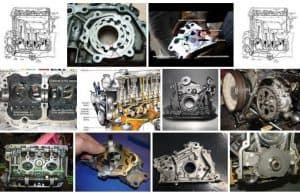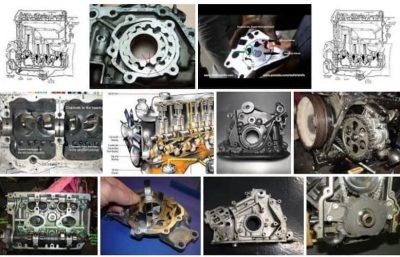How To Change Rubber Bushes And Exhaust Manifold Gasket

Steady-bar rubbers are vital auxiliary parts of the car engines that help in reducing vibrations and shock impact on the engine during operation.
When the rubbers are worn out, the engine will rock excessively causing clutch judder and putting an unnecessary strain on the exhaust system.
Changing the rubbers regularly will help prolong the life of the engine and reduce the breakdown maintenance cost.
The rubbers usually have a bolt across their center for tensioning purpose and other arrangements which is based on the engine manufacturer’s preferences.
How To Change Rubber Bushes
Meanwhile, in the case that you want to change or fit the existing rubber properly in its position, here are the procedures:
- Remove the fixing bolt at the center of the rubber and loosen the cover bracket. Both parts can be found on the cylinder head of the engine.
- Swing the steady bar clear, and pushing the old rubbers from the eye.
- Use your to fit the new rubbers and its sleeve. In the case of any difficulty, use washing-up liquid to coat them so that they can enter properly into the position meant for it.
- The next step is to fit the center sleeve, re-assemble the bracelet and the fixing bolt and tighten the bolts.
The Exhaust Manifold Gasket
Meanwhile, when it comes to changing the exhaust manifold gasket, the job may become a little more tedious than when fitting the rubbers.
If an exhaust manifold leaks especially because of a loosed nut or bolt, the fumes from the exhaust can find their way back into the combustion chamber. Such will risk the engine’s life and overall performance.
Besides being sucked into the inlet manifold, the fumes can also drift into the car and create a disturbance. A leaking exhaust manifold will make a distinct shuffling sound and the hot fume escaping from the gap can be felt with the palm if it is brought close to it.
Loosed nuts and bolts are not the only cause of such leakage. A weakened gasket or damaged gasket can cause a similar problem.
Infarct, 50% of leakages occurring within the manifold can be traced to gasket problems. It could be that the gasket was wrongly positioned, damaged, or weak.
The first step in handling any leakage problem within the manifold is to identify the cause.
The best approach to this will be to tighten all the nuts and bolts properly first and then check if the leak still persists. If the answer means yes, then changing the gasket will be the next option.
Sometimes gasket can help prevent leakage even when the bolts or nuts are not complete or not torqued properly.
Some cars have a combination of the inlet and exhaust manifold together in such, their carburetor air cleaner will be removed first before accessing the manifold.
In some cases, it may become necessary to disconnect the throttle and choke controls at the carburetor if they are anchored to the manifold.
How To Change Exhaust Manifold Gasket
Meanwhile, there are steps to be taken when trying to change the gasket to access the exhaust manifold based on leakage problems. Here are the known steps:
- If the manifold has never been removed before, but a penetrating oil or liquid solutions like the WD-40 series. Apply the liquid to the base of all the bolts or nuts in the manifold to help weaken the stiffness and make it easy to lose. Sometimes it may be necessary to allow the oil or solution to stay up to 24 hours to have a deeper penetration into the base of the threads in the manifold.
- Using a suitable socket spanner, remove the nuts or bolts that hold the manifold together and ensure you do not damage the head of any of the bolts or nuts otherwise it may be hard to torque it later.
- Gradually and carefully separate the manifold from the main body of the engine to access its gasket connecting it with the engine block (cylinder head). In some engine designs, the downpipe to the exhaust system will restrict the movement of the manifold. In that case, loosen the clamp between the manifold and the downpipe.
- Reach out and remove the gasket and use smooth sandpaper to clean up the flanges of both sides using a solution like the WD-40 to ensure all traces of the gasket removed cannot be found on the surfaces of the two flanges. Do not do this with a sharp object or rough sandpaper because it may cause further problems of leakage.
- Insert the new gasket into the required position and ensure that both surfaces are dry. Refit the parts of the manifold and check if the gasket is seating properly before inserting the bolts or inserting a nut.
- While tightening, use the hand first for all the nuts or bolts before applying the spanner to torque it.
- Tighten the manifold firmly with a suitable spanner or the exact size of the head of the bolts or nuts, sometime socket spanners seem to be the best for this purpose since it provides easy access to all the parts of the manifold and gives a higher torque range.
- In the case where the downpipe was loosed, re-tighten it and reconnect the throttle and choke controls. Also, refit the air cleaner removed during the process.
